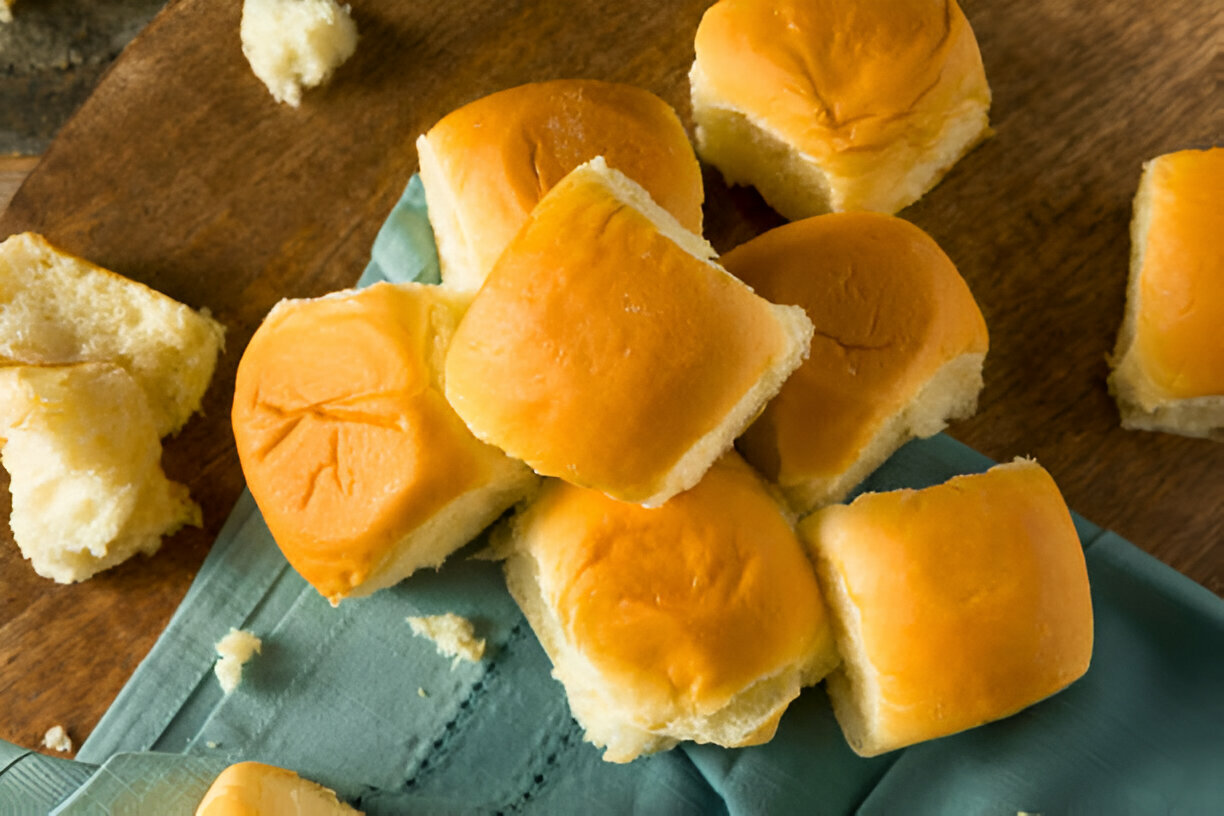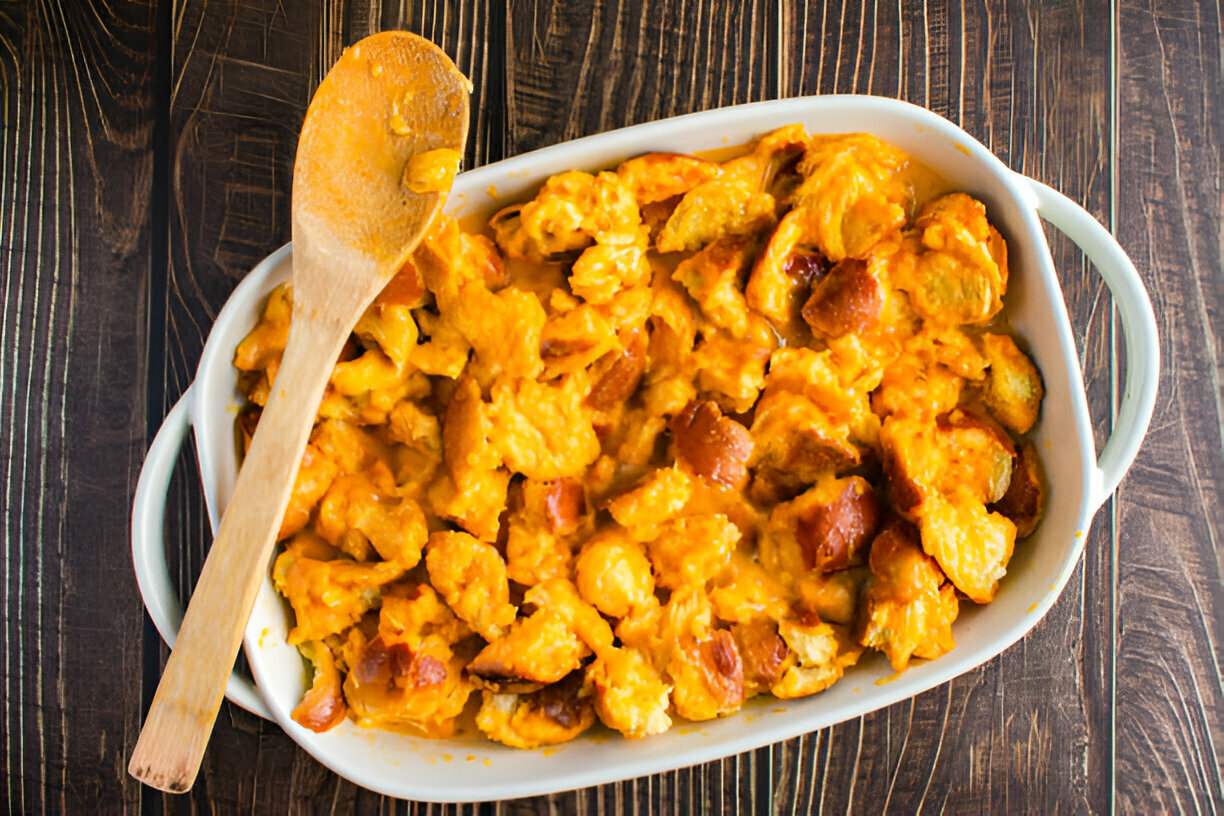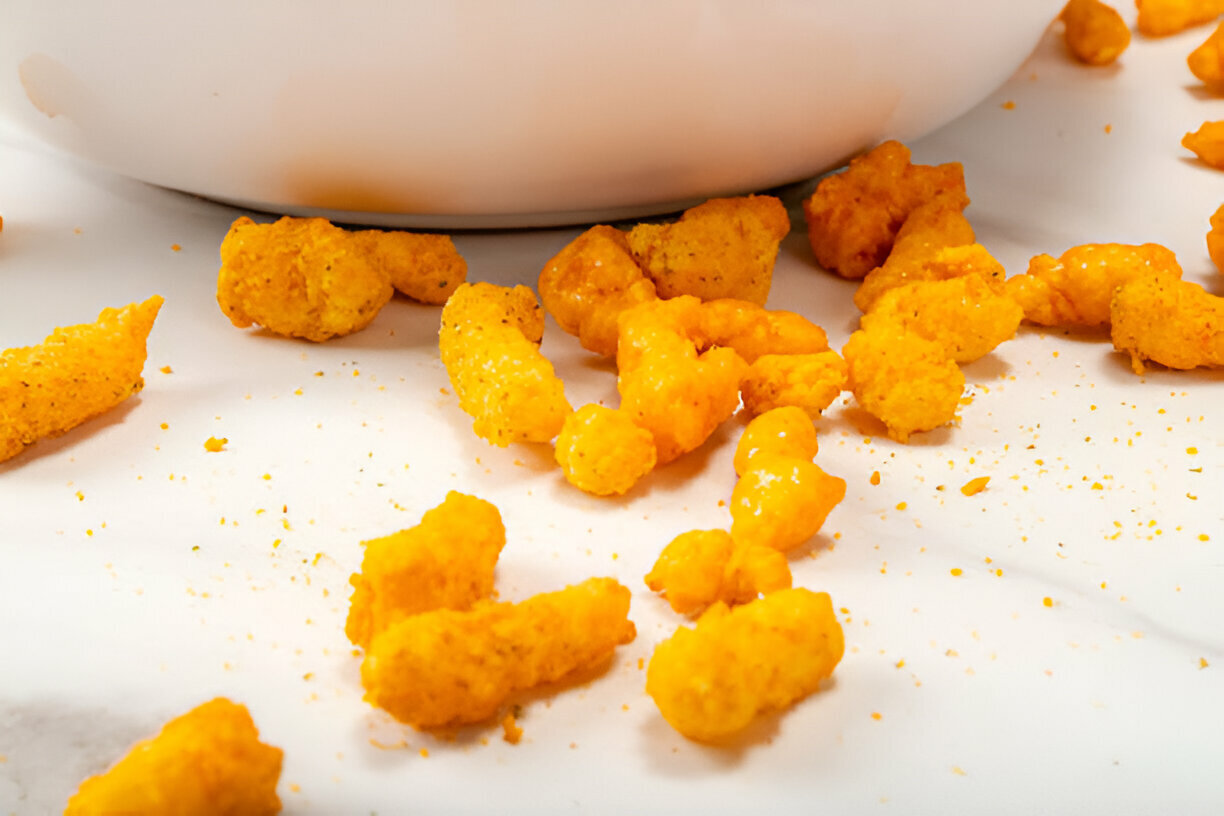Pasta Alfredo is creamy , rich and feels fancy . It came from Italy and people now eat it in lots of restaurants and homes everywhere .
We will look at its history , find out wich ingredients you need , and share tips to make it a bit healthier . Then you’ll get a simple recipe and some common mistakes to avoid so it turns out great .

History of Pasta Alfredo
Pasta Alfredo was name after Alfredo di Lelio , who first cook it in Rome in the early 1900s . The story goes that his wife lost her appetite when she was pregnant , so he mixed fettuccine with butter and Parmesan cheese to help her eat . That simple meal became super popular right away .
When American tourists tried it , they fell in love and brought the recipe back home . In the 1920s , Italian immigrants in the US added heavy cream and tried different pasta shapes , so the dish slowly changed to what we know today .
Mary Pickford , a big movie star back then , ate it at Alfredo’s restaurant and told all her friends in Hollywood about it . After that , many restaurants in America put Pasta Alfredo on their menus and it turned into a classic comfort food .
Ingredients of a Classic Pasta Alfredo
A good Pasta Alfredo only needs a few things , but each one matters to get that smooth and dеlicious sauce .
- Fettuccine pasta: Wide, flat noodles hold the sauce best . Fresh pasta gives a softer bite , but dried works fine too .
- Butter: Unsalted is best so you can control the salt level . It gives the sauce a rich base .
- Heavy cream: This is what makes it super creamy . You can use half-and-half to cut calories a bit .
- Parmesan cheese: Freshly grated cheese melts better and tastes nutty . Don’t use pre-grated stuff , it can make the sauce grainy .
- Salt and pepper: Just season to taste . A dash of black pepper on top adds a nice kick .
Try to buy high-quality pasta and cheese if you can . Even small changes in those ingredients will make a big difference in taste .
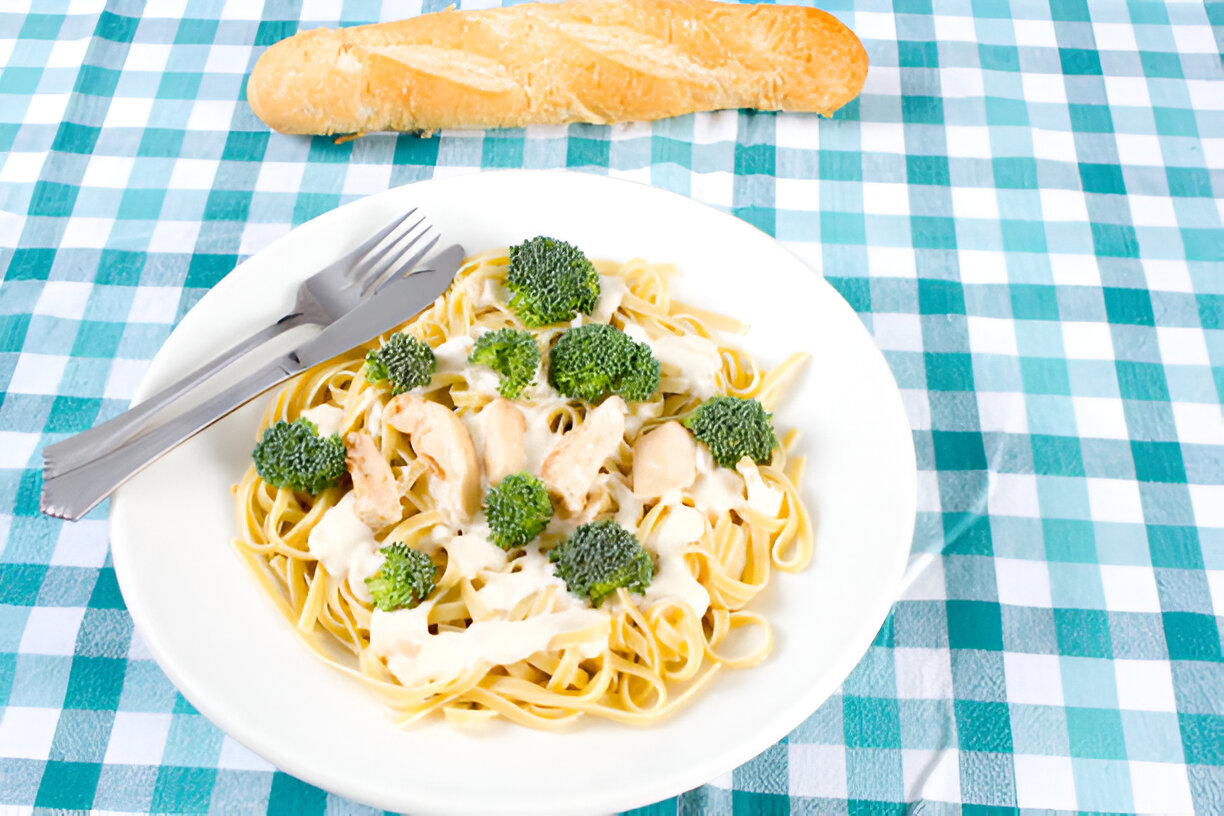
Health Considerations
Pasta Alfredo is tasty , but it’s also high in calories . One cup of heavy cream has around 800 calories , and half a cup of butter adds another 800 . With pasta and cheese , a serving can top 1,000 calories easily .
If you’re watching your diet , you can swap some cream for half-and-half or a low-fat option . Using whole grain or chickpea pasta adds fiber and makes it more filling . Throw in veggies like broccoli or spinach to boost nutrition without losing flavor .
Detailed Recipe for Pasta Alfredo
Ingredients
- Fettuccine pasta: 2 cups
- Unsalted butter: ½ cup
- Heavy cream: 1 cup
- Grated Parmesan cheese: 1 cup
- Salt: to taste
- Freshly ground black pepper: to taste
- Optional: chopped parsley for garnish
Directions
- Cook the fettuccine according to package directions until al dente . Drain and set aside .
- In a large pan , melt the butter over medium heat .
- Slowly pour in the heavy cream , stirring so it mixes well .
- Let it simmer for 2–3 minutes but don’t let it boil .
- Add the Parmesan cheese and stir until the sauce is thick and smooth .
- Season with salt and pepper .
- Toss the pasta in the sauce so every strand gets coated .
- Serve right away and sprinkle parsley on top if you like .
Tips for Perfection
- Use fresh pasta and fresh cheese for the best flavor .
- Don’t overheat the sauce or it may split .
- You can try penne or rigatoni if you don’t have fettuccine .
- A splash of white wine in the sauce can add nice depth .
Variations of Pasta Alfredo
Pasta Alfredo is easy to change up so it fits what you like or eat . Here are some ideas :
Chicken Alfredo
Add cooked chicken breast for more protein and a meaty twist .
Shrimp Alfredo
Sauté shrimp in garlic and butter first , then stir them into the sauce for a seafood version .
Veggie Alfredo
Toss in bell peppers , mushrooms or peas to make it veggie-packed and colorful .
Gourmet Options
For special occasions , try adding truffle oil or wild mushrooms to make it feel fancy .
Common Mistakes to Avoid
- Overcooking the pasta: Aim for al dente so it has some bite .
- Using pre-grated cheese: Freshly grate your Parmesan for a smoother sauce .
- Wrong sauce thickness: If it’s too thick , stir in a bit of pasta water ; if it’s too thin , let it simmer a bit more .
- Swapping key ingredients: Some low-fat substitutes can change the taste too much , so pick wisely .
Pairing Suggestions
Wine Pairings
Try a glass of Chardonnay or Pinot Grigio for a fresh contrast to the creamy pasta .
Side Dishes
A light salad with vinaigrette or some garlic bread are classic sides . Roasted veggies work great too .
Who Serves Pasta Alfredo?
Many Italian restaurants around the world, especially in the US, have their own take on Pasta Alfredo . Chains like Olive Garden and The Cheesecake Factory are famous for it , but you can also find versions in small trattorias and pizzerias that use local ingredients .
FAQs Section
What can I substitute for heavy cream in Pasta Alfredo?
You can use half-and-half , a mix of milk and butter , or non-dairy creams like cashew or coconut cream .
Can I freeze leftover Alfredo sauce?
Yes , you can freeze it , but it might get a bit watery when you reheat . Warm it slowly .
Is Pasta Alfredo gluten-free?
Not if you use regular pasta . But you can swap in gluten-free noodles to make it work .
How can I make Pasta Alfredo dairy-free?
Use plant-based cream and a sprinkle of nutritional yeast instead of Parmesan .
What’s the difference between authentic Alfredo and American-style Alfredo?
In Italy , Alfredo is just butter and cheese . The US version adds heavy cream to make it thicker and richer .
Conclusion
Pasta Alfredo is one of those dishes everyone loves for its creamy comfort and simple taste . Its story from Italy to America shows how recipes can change and still stay amazing . Try the basic recipe or your own twist to make it your favorite .
Call to Action
Tell us your best Alfredo idea or a fun variation in the comments below!
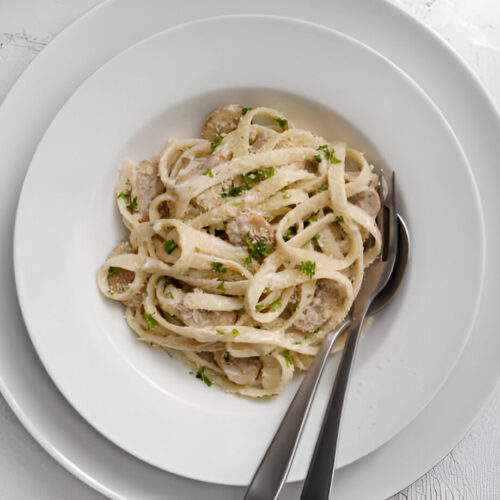
pasta alfredo
Equipment
- 1 Large pot
- 1 Colander
- 1 Medium saucepan
- 1 Whisk
- 1 Wooden spoon
- 1 set Measuring cups and spoons
- 1 Garlic press optional
Ingredients
- 12 ounces fettuccine pasta
- ½ cup unsalted butter 1 stick
- 1 cup heavy cream For a lighter version, you can substitute half-and-half.
- 1 ½ cups grated Parmesan cheese
- 2 cloves garlic, minced
- to taste none salt
- to taste none freshly ground black pepper
- for garnish none chopped parsley Optional
Instructions
- Bring a large pot of salted water to a boil. Add the fettuccine pasta and cook according to package instructions until al dente. Reserve 1 cup of pasta cooking water, then drain the pasta in a colander.
- In a medium saucepan, melt the butter over medium heat. Once melted, add the minced garlic and sauté for about 1 minute until fragrant, being careful not to let it burn.
- Slowly pour in the heavy cream and stir well. Bring the mixture to a gentle simmer and cook for 2-3 minutes, stirring occasionally.
- Reduce the heat to low and gradually whisk in the grated Parmesan cheese until fully melted and smooth. If the sauce is too thick, add reserved pasta cooking water a little at a time until you reach your desired consistency.
- Add the cooked fettuccine to the sauce and toss until well-coated. Season with salt and freshly ground black pepper to taste.
- Serve immediately, garnished with chopped parsley if desired.

